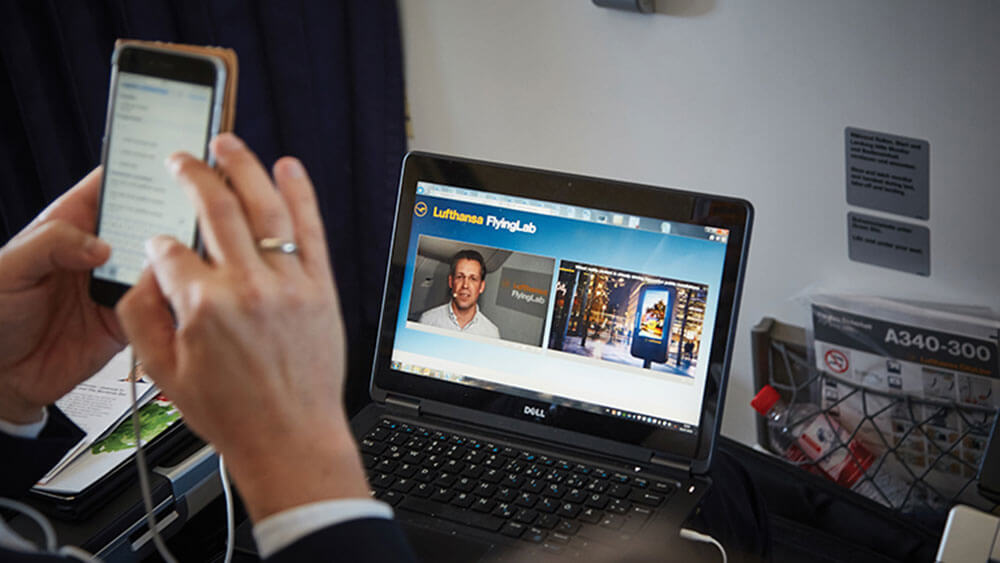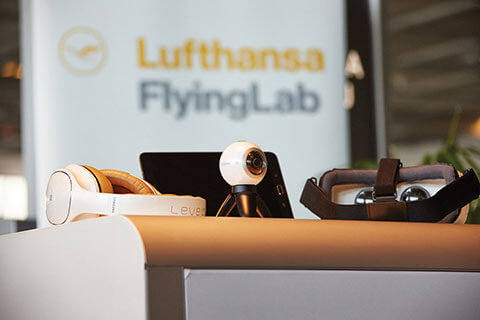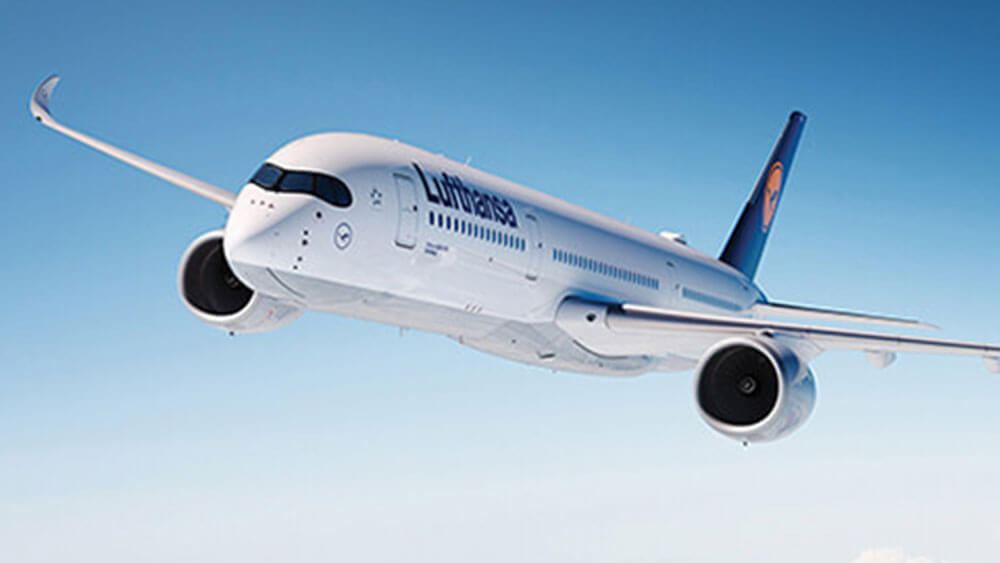Gaining new knowledge from face-to-face conference relies on one fairly basic principle: You have to actually get to the destination first. But by the time the lights go up on the opening session, many attendees have already used quite a bit of their most valuable resource without any real benefits. “Travel time,” Torsten Wingenter, senior director of digital innovations at Lufthansa, told Convene in a recent interview, “is often lost time.”
Wingenter is giving some of those precious hours back to travelers with Lufthansa’s FlyingLab, a conference that takes place — you guessed it — in the sky. Wingenter aims to coordinate the FlyingLab on specific routes and dates that coincide with big-name programming in certain destinations. “We look for special events where we know that many people on the flight will be going to the conference,” Wingenter said. “At the same time, we have regular tourists on the plane, too, and they can participate.”

Lufthansa hopes to coordinated its FlyingLab option on specific routes and dates that coincide with big-name conferences in certain destinations.
An Experience for Everyone
On Feb. 8, passengers on flight LH 400 from Frankfurt to New York had a preview of the on-the-ground action occurring during New York Fashion Week. The crew strutted the aisles in flight-attendant uniforms from the past 60 years, and passengers used their laptops and tablets to watch presentations on wearable technology and the digitalization of fashion delivered by subject-matter experts standing at the front of the plane. A month later, on March 9, passengers on flight LH 440 from Frankfurt to Houston heard talks on virtual reality, drones, bots, and startup entrepreneurship that reflected the agenda at SXSW in nearby Austin. All the ideas and inspiring presentations were bonuses; there was no additional cost to be part of the FlyingLab.
“We had been discussing this idea for years,” Wingenter said. “It came up again and again in team workshops, but there were all kinds of challenges. The biggest issue was that we wanted to get the entire plane involved — not just the first few rows of first class.”
To solve that problem, Wingenter turned to a familiar resource for traditional event professionals: technology. He worked with two of the company’s subsidiaries, Lufthansa Technik and Lufthansa Systems, to develop a mobile streaming system for planes that allows guests to use Wi-Fi to participate in in-flight programming. “Whether you’re in the first seat in business class or the last row of economy,” Wingenter said, “you can be part of the FlyingLab.”
The technology helps the FlyingLab steer clear of the troubles of a talking-head format, too. Below the live stream, a chat box allows passengers to enter questions, and each 12- to 15-minute presentation concludes with a Q&A session where presenters address inquiries from the audience. Questions aren’t limited to the screen, though. Wingenter said that one of the most promising signs he’s noticed from the first few runs of the FlyingLab is that passengers are enjoying the company and conversation of strangers. “It doesn’t feel like a regular flight,” Wingenter said. “The mindset and openness of the passengers feel more like the attitudes at a rock concert. They aren’t sitting anonymously with their screens. They’re interacting.”

Passengers using Lufthansa’s FlyingLab get to test new technologies during their flights
Climbing Higher
Passengers aren’t just interacting with each other; they’re also testing out new technologies during the flight. For example, the inaugural FlyingLab journey — a July 2016 flight from Frankfurt to San Jose — leveraged Silicon Valley’s current obsession with virtual reality, and allowed passengers to take the Samsung Gear VR headset for a spin. On the flight to Houston, passengers could test a video headset from Glyph, which projects video directly onto a viewer’s retina in HD quality.
And passengers aren’t the only ones benefiting from the hands-on discovery. “It’s a perfect platform for us to understand how our customers might use these new tools,” Wingenter said. “We can give them a chance for six to eight hours to test some of the devices they might buy on their own and bring onboard in the future.”
As Lufthansa experiments with the FlyingLab to fine-tune the experience, the possibilities for organizers who want to inspire attendees before they arrive look promising. But the idea also has applications outside of a traditional group conference format. “For example, maybe we could offer cultural training onboard,” Wingenter said. “As an expat is flying to China, there could be inter-active lessons, and [he or she] could receive a certificate for the training once they’ve completed the course and landed in the destination.”
No matter how the FlyingLab evolves, the concept seems poised to rewrite the norms of getting from here to there. And in an era of air travel that has been defined by shrinking leg-room and lackluster customer service, Lufthansa’s vision might just inspire passengers to long for more time at cruising altitude. “The experience is all about air transport — not air travel,” Wingenter said. “We don’t just want to optimize food, beverages, or watch-ing movies. We want to ret h.ink what people can do on a plane.”

